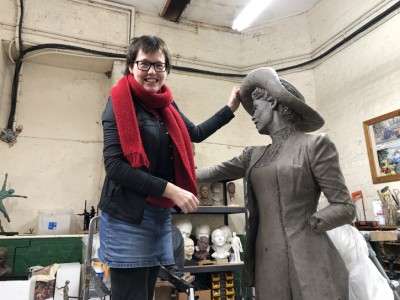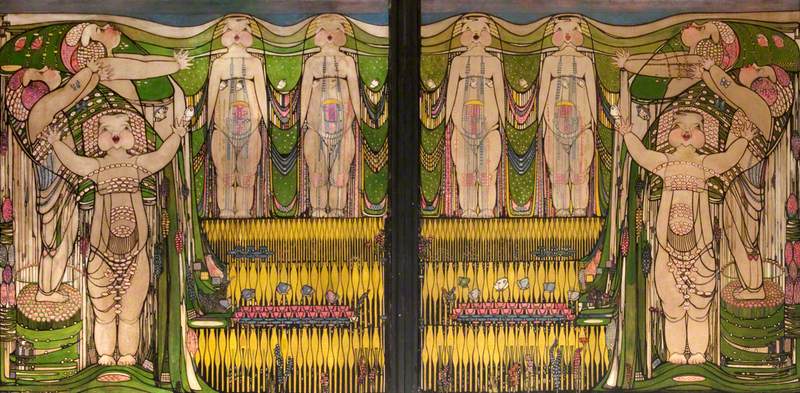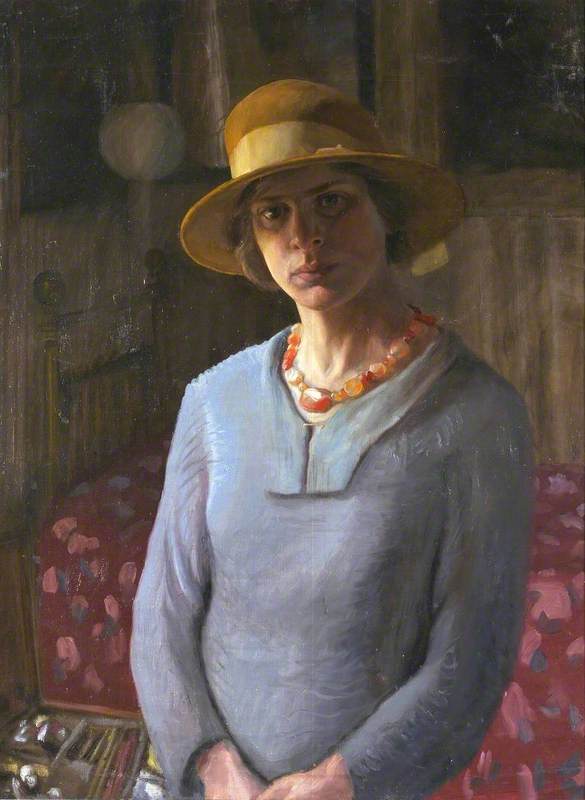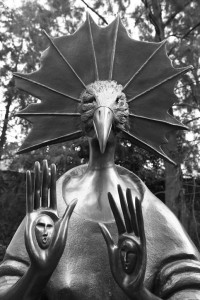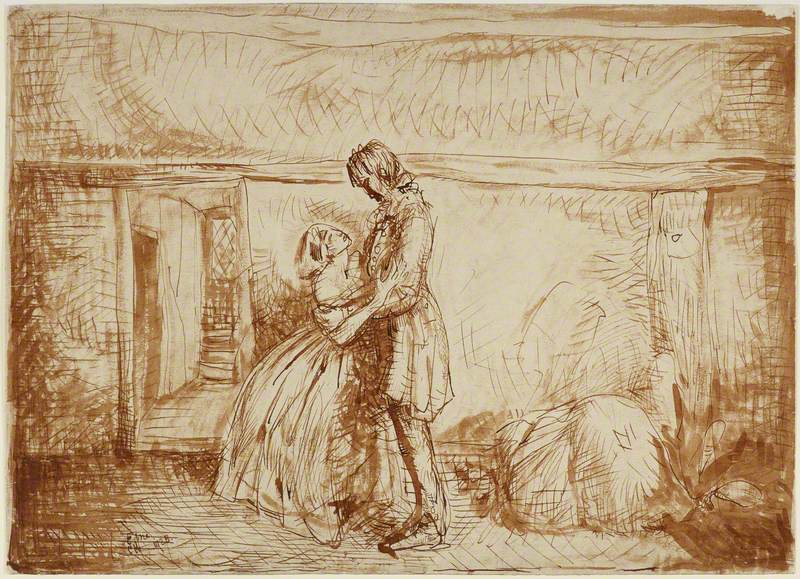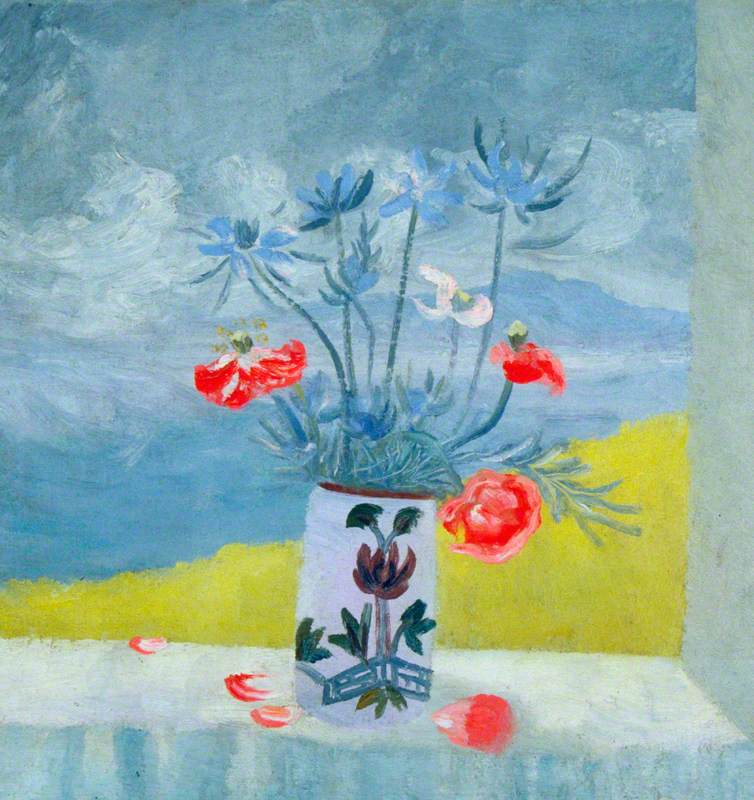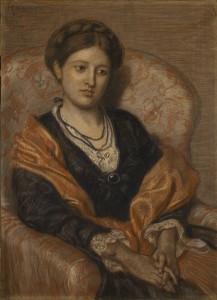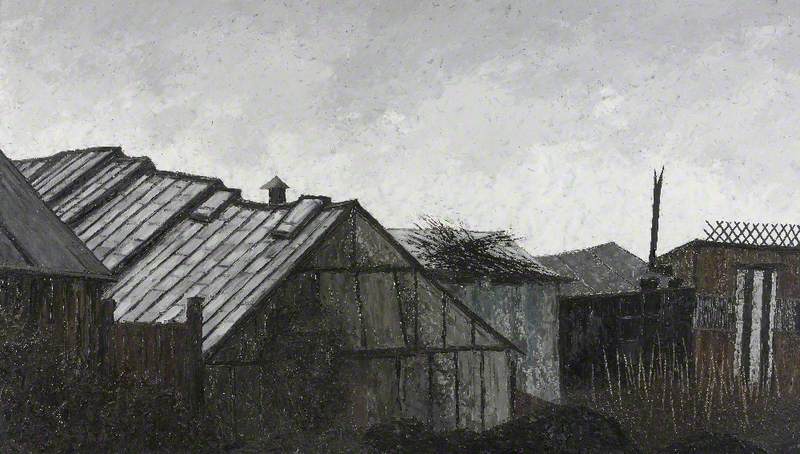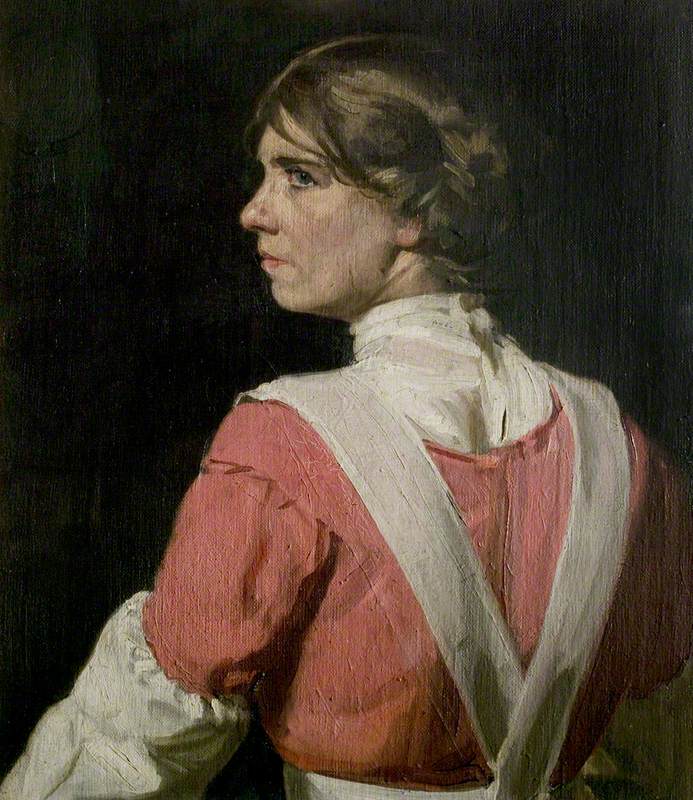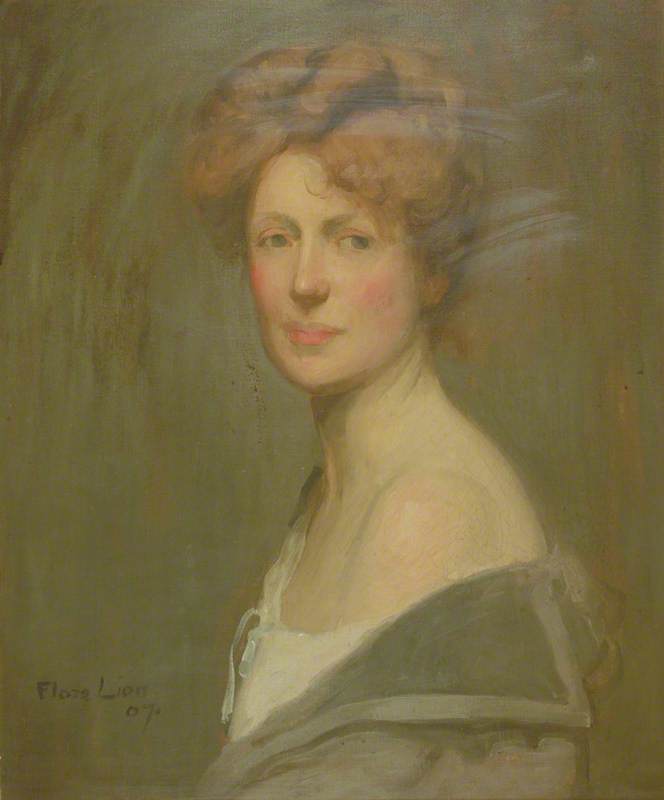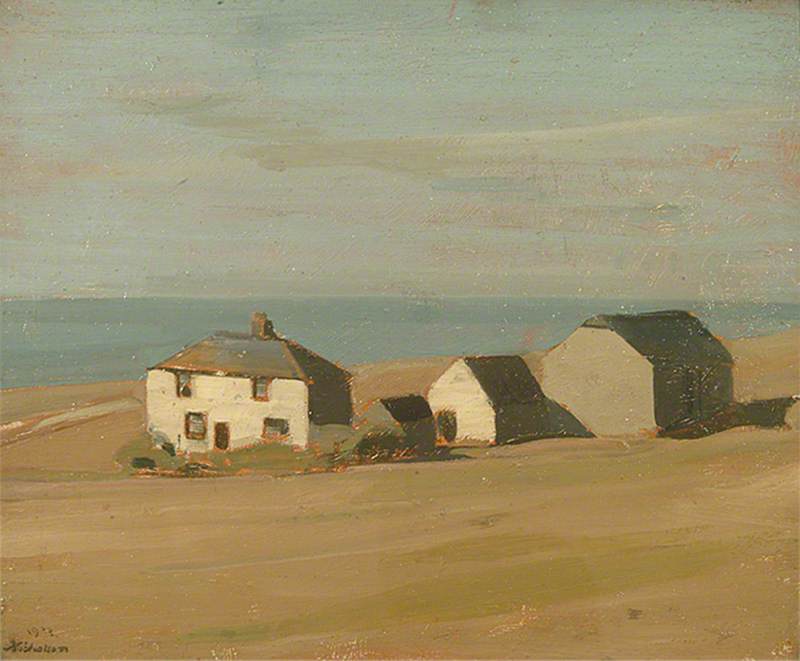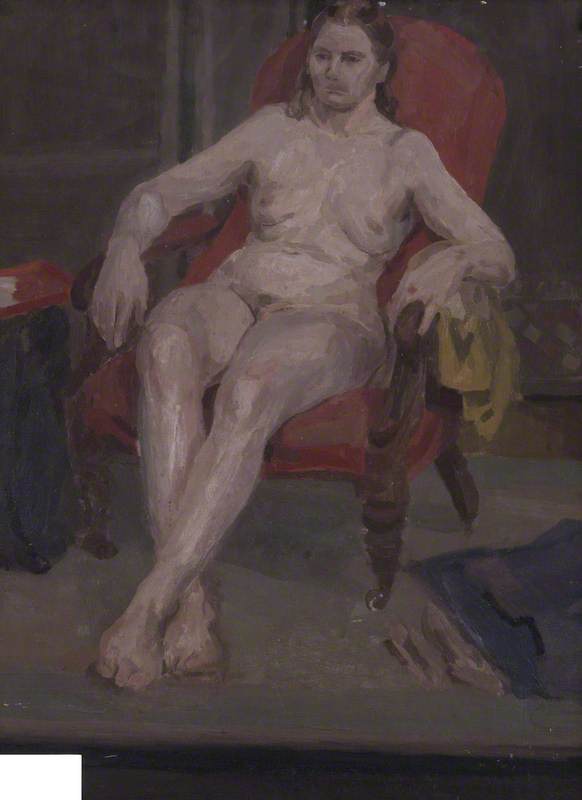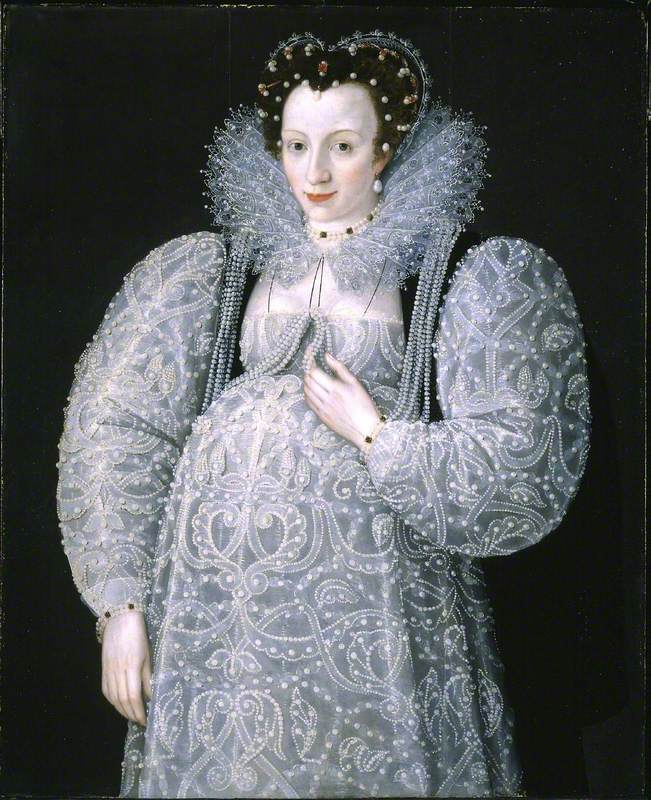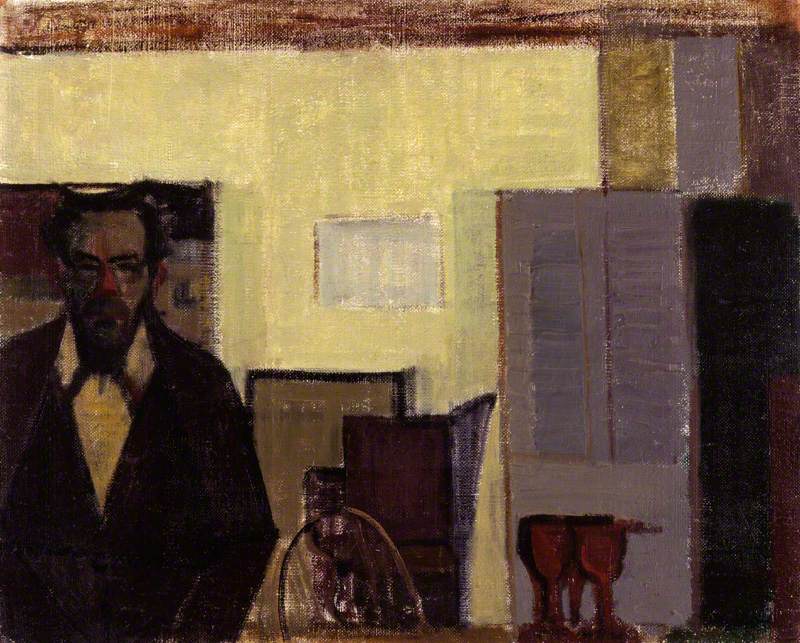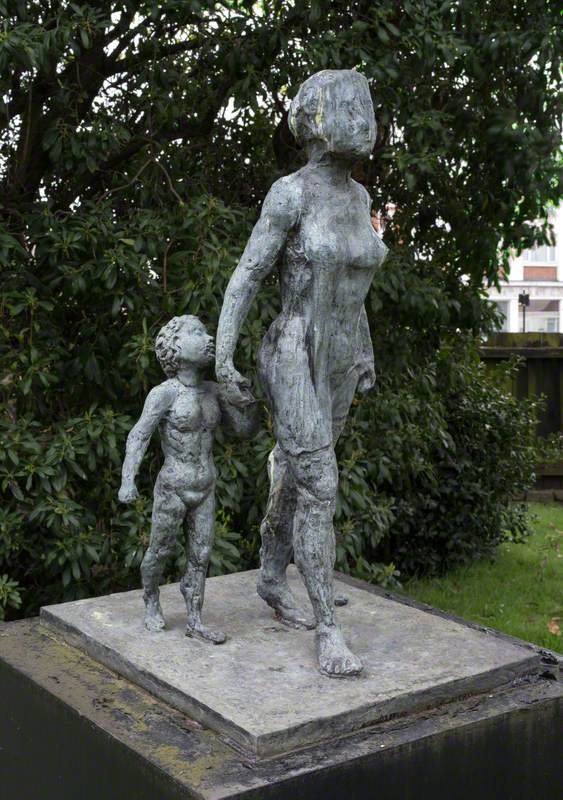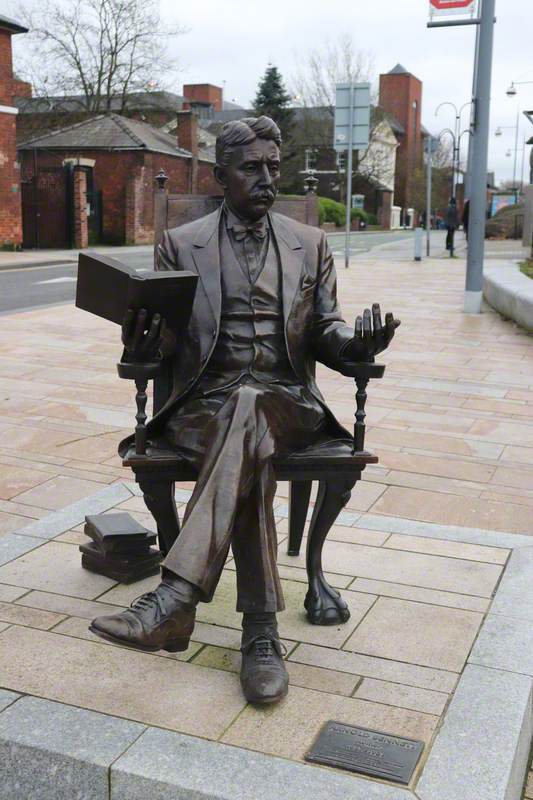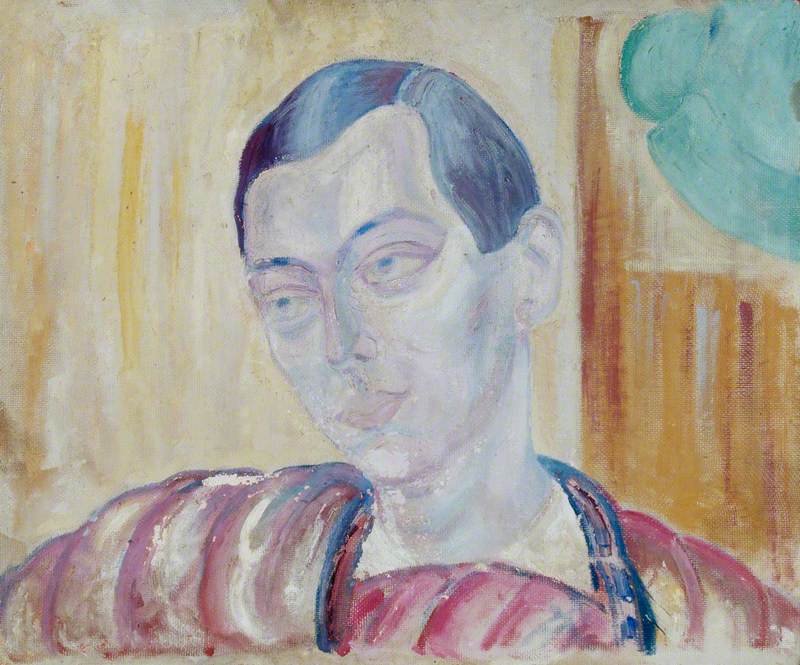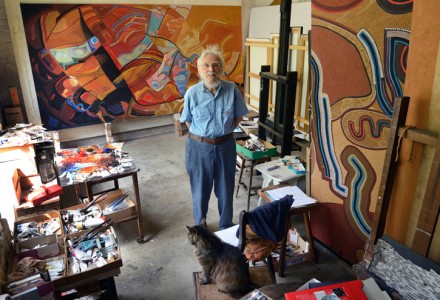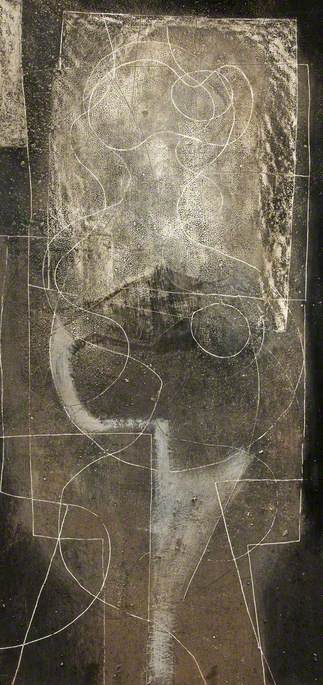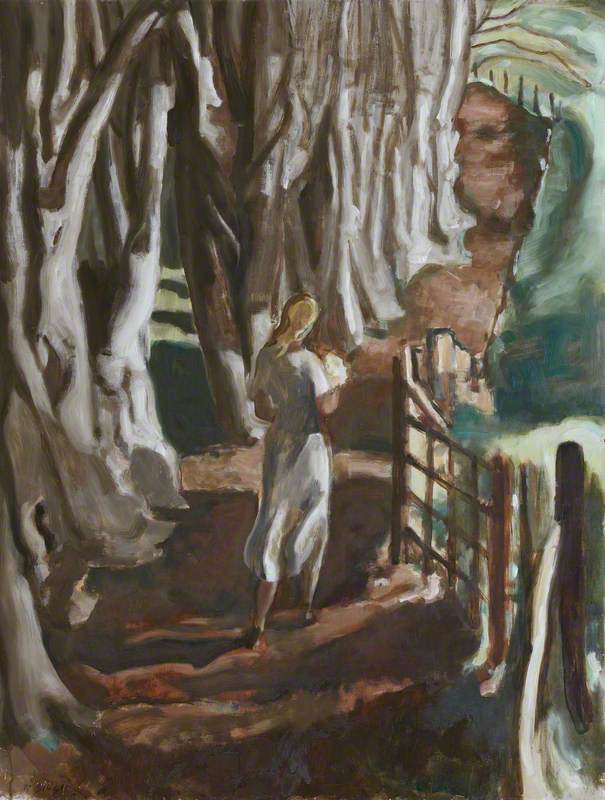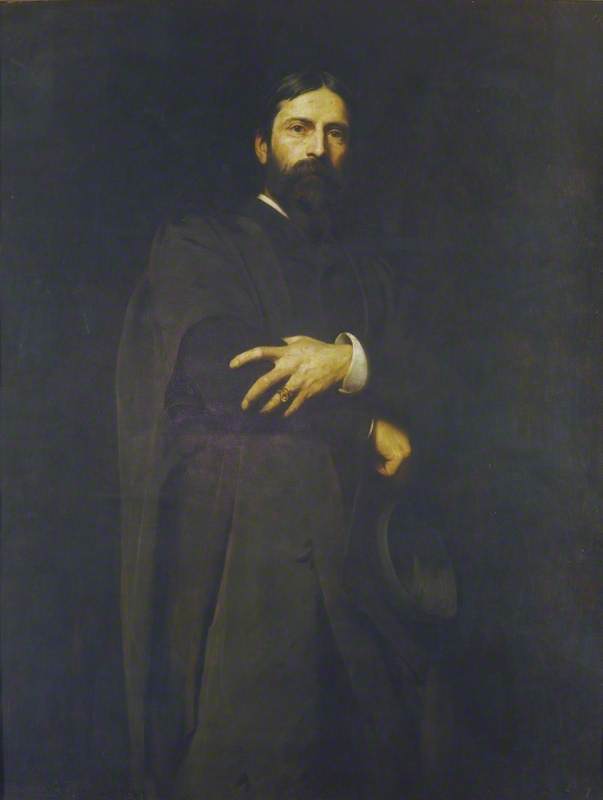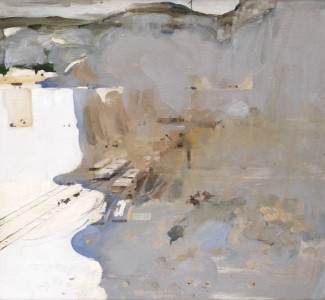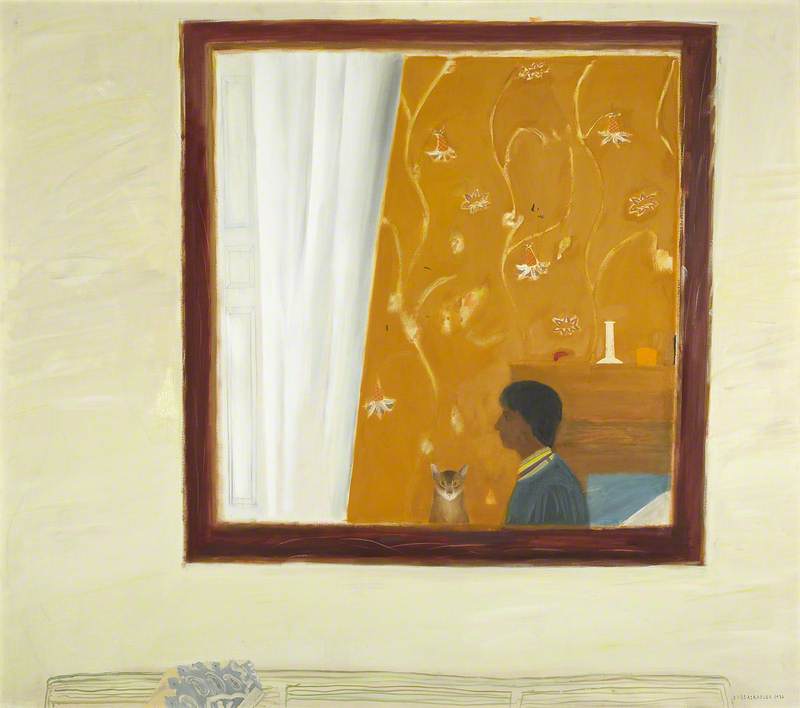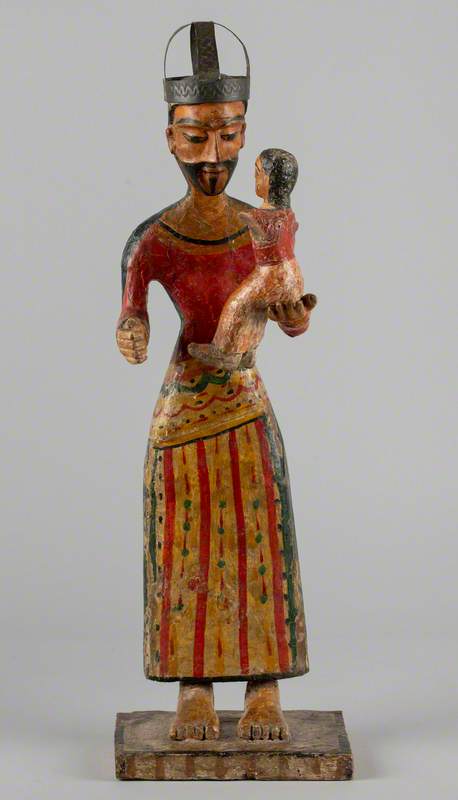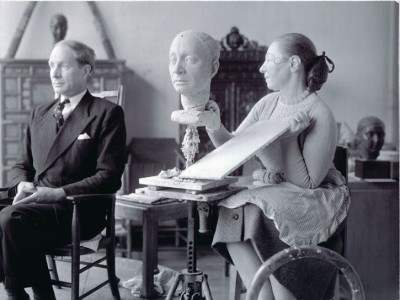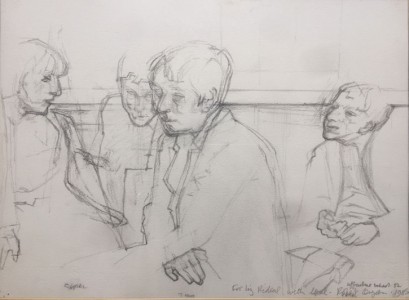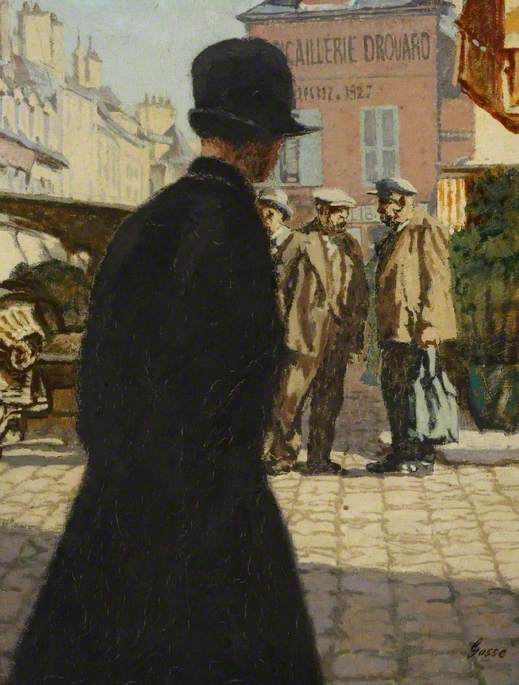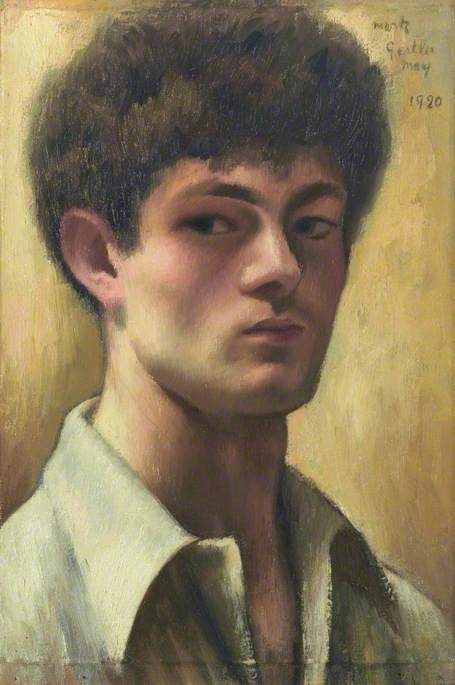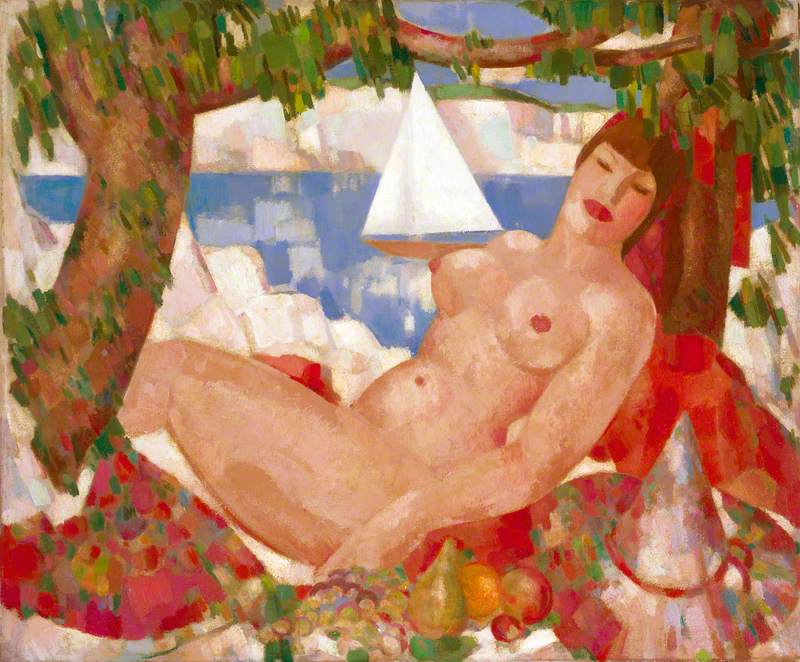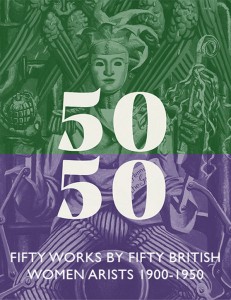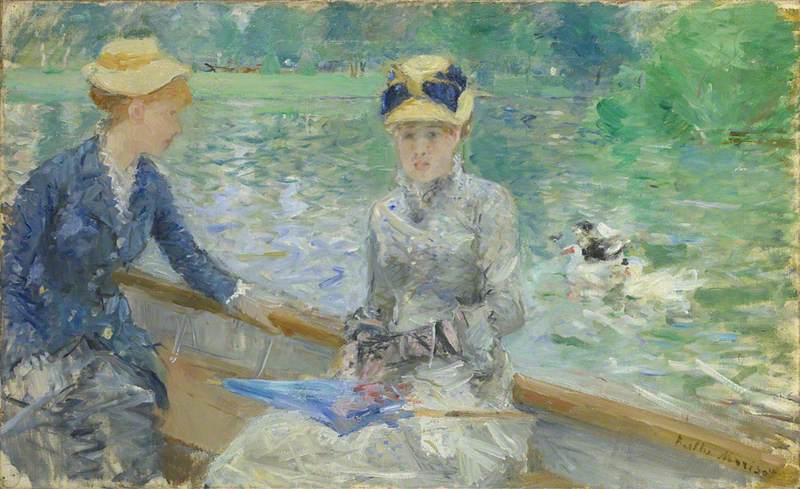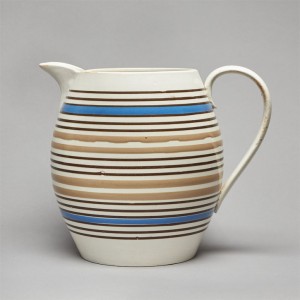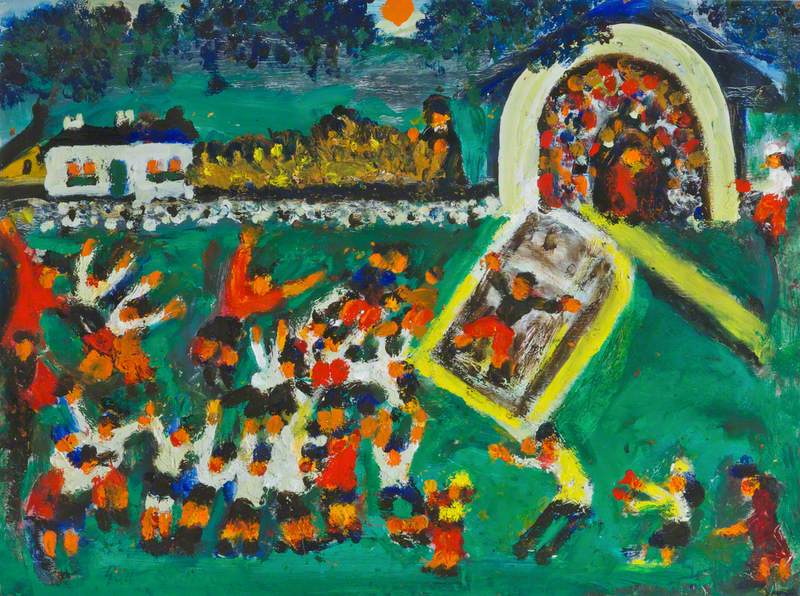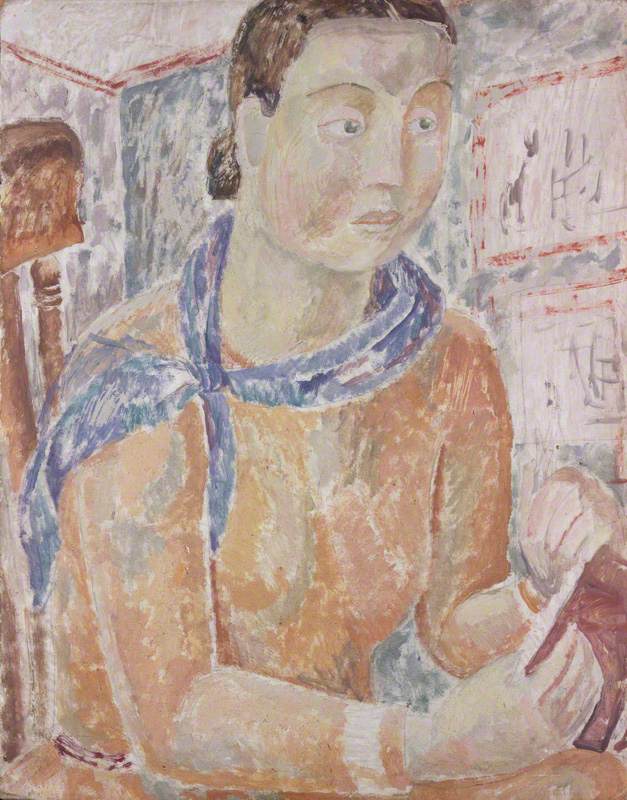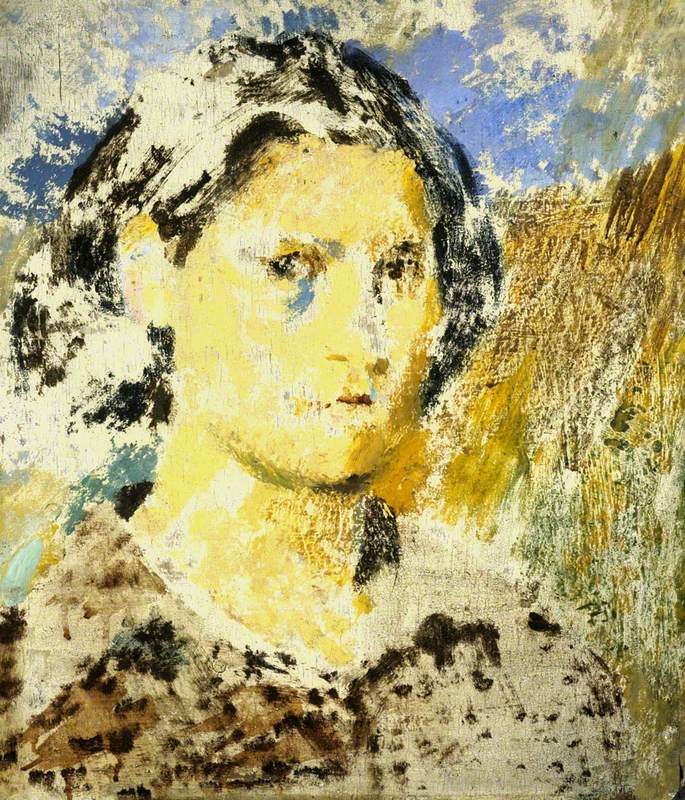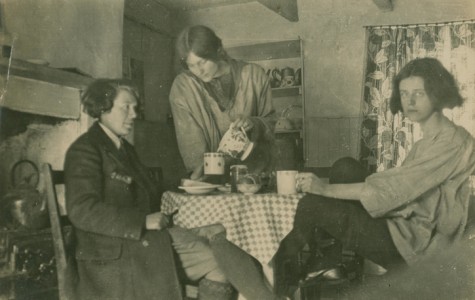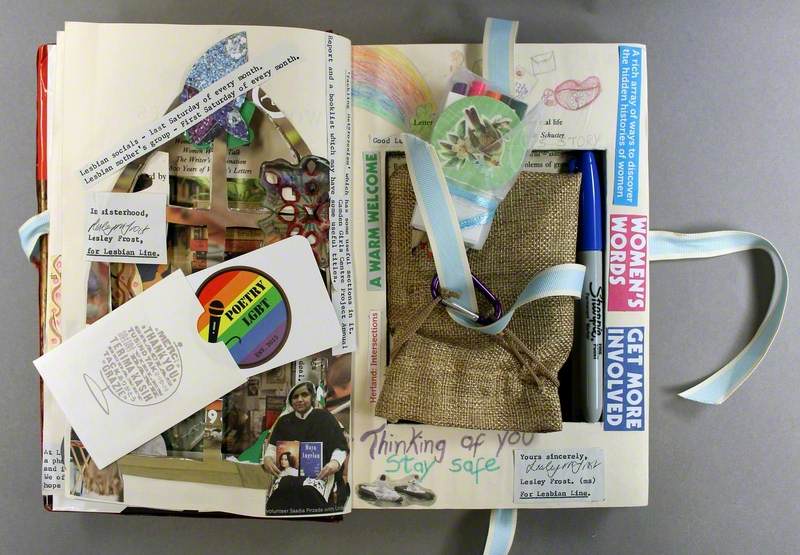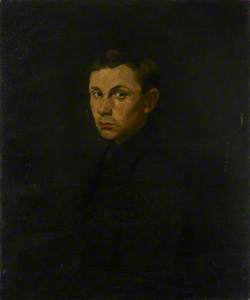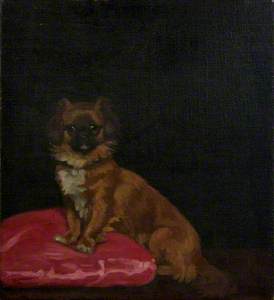In William Orpen’s portrait of a Bloomsbury family, the dominant figure of the father sits in the foreground, in profile, fingers laced, in a polka dot coat, ruminating with a severe expression. While his youngest child poses primly in front of him, there are hints of dissent in the sidelong glances of the older children at the dinner table. And at the back, by the door, the strangest, orphan-like figure of his wife, shrunken in scale and gazing out with a forlorn expression.
The space for Mabel as an artist was bordered first by the ambitions of her father and later by her husband’s career and the needs of her children. But she was also an emancipated woman of the Suffragette age
The portrait is
The Red Jersey
(Christopher 'Kit' Nicholson, 1904–1948, the artist's son) c.1912
Mabel Nicholson (1871–1918) 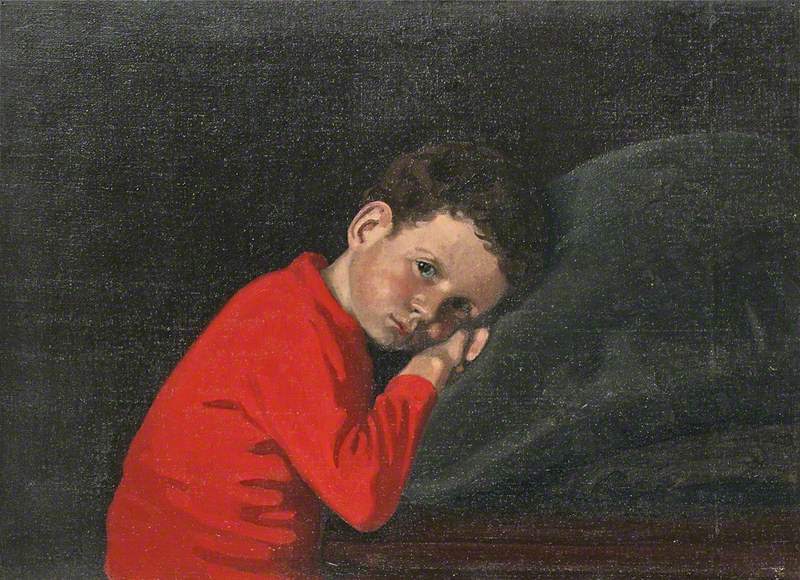
Often overlooked, until the recent focus on redressing the balance for women artists in British art history, is the figure of Nicholson’s wife, Mabel Pryde Nicholson, sister of the artist James Ferrier Pryde. Her professional career was short – from 1904 to 1917 – but she remains a considerable painter in her own right.
Mabel Nicholson’s oil painting The Grange, Rottingdean, appeared in the milestone show focussed on female painters and sculptors, 'Modern Scottish Women, Painters and Sculptors 1885–1965', on loan from a private collection.
Ten of Nicholson's works feature on Art UK, including her telling portrait of the young Ben Nicholson, showing a marked resemblance to his mother’s expression in the Orpen painting, in the National Portrait Gallery collection. Most of her works use her own children as her models in striking, characterful poses, sometimes in theatrical costumes; the family
The most famous story of Mabel Pryde is told of this rebellious young woman driving a flock of geese into the life class at Hubert von Herkomer’s art school in Bushey, Hertfordshire, run by the then-famous portraitist. She had persuaded her father to send her at the age of 17, and it was there she first met the young William Nicholson.
One writer spoke of her ‘strong sense of the ridiculous’ and freely described the young art student as ‘a strapping hoyden, with no reverence for art whatever, more talent than all the rest put together, and incorrigible laziness.’ William, her shocked parents had learned, was not her first lover at the school, despite its segregated classes.
Pryde was the youngest of seven children, daughter of
Nicholson quit Herkomer’s school and made an artist’s foray to Paris, but they married on William Nicholson on his return to London in 1893, without her parents’ knowledge.
While Mabel Nicholson has two works in the
After meeting Mabel at Herkomer’s, William Nicholson became a close friend of her brother, the artist James Pryde. The architectural fantasies that figure in James Pryde’s later paintings include
Sir William Nicholson made his career as a portraitist but who is now chiefly admired for his still lifes. It is said that these were an early influence on his son Ben’s work. But Ben Nicholson described his mother as ‘the rock on which my whole existence has been based.’ While William Nicholson’s mistresses notably included their housekeeper, Marie Laquelle, Mabel Nicholson bonded closely with her children; in 1913 she
The space for Mabel as an artist was bordered first by the ambitions of her father and later by her husband’s career and the needs of her children. But she was also an emancipated woman of the Suffragette age, and from 1910 to 1916 she showed at the Goupil Gallery and in other exhibitions, with her only solo show at the Chenil Gallery in London in 1912. Her subjects moved from single figures to figure groups to animals.
She died in 1918 in the influenza epidemic, aged 47; her son Tony died of wounds in the trenches a few months later. Ben and Nancy
With William Nicholson, Mabel had lived in the midst of artistic Bloomsbury society. His subjects included J. M. Barrie, for whom he produced the first sets for the play of Peter Pan, and Max Beerbohm. Beerbohm described ‘Prydie’, as Mabel was known, as ‘looking like the result of
The National Galleries of Scotland hold William Nicholson’s pencil and
But Ben Nicholson would also recall from childhood her disdain for pretention: ‘After a lot of art-talk from our
Tim Cornwell, freelance arts writer


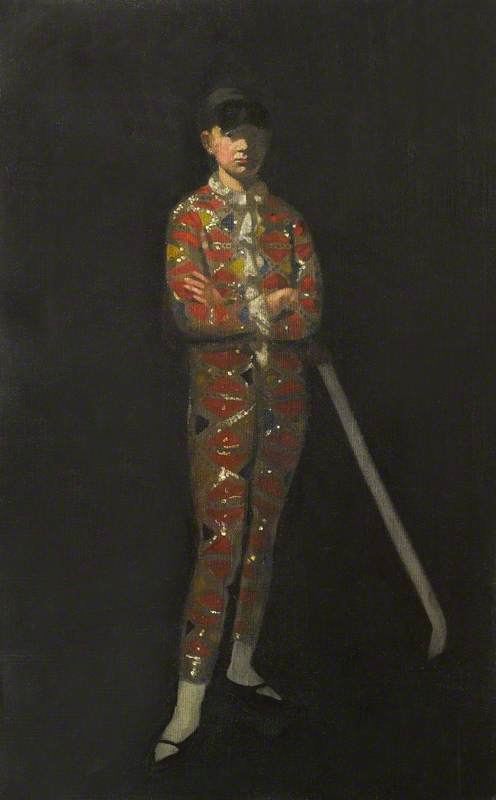
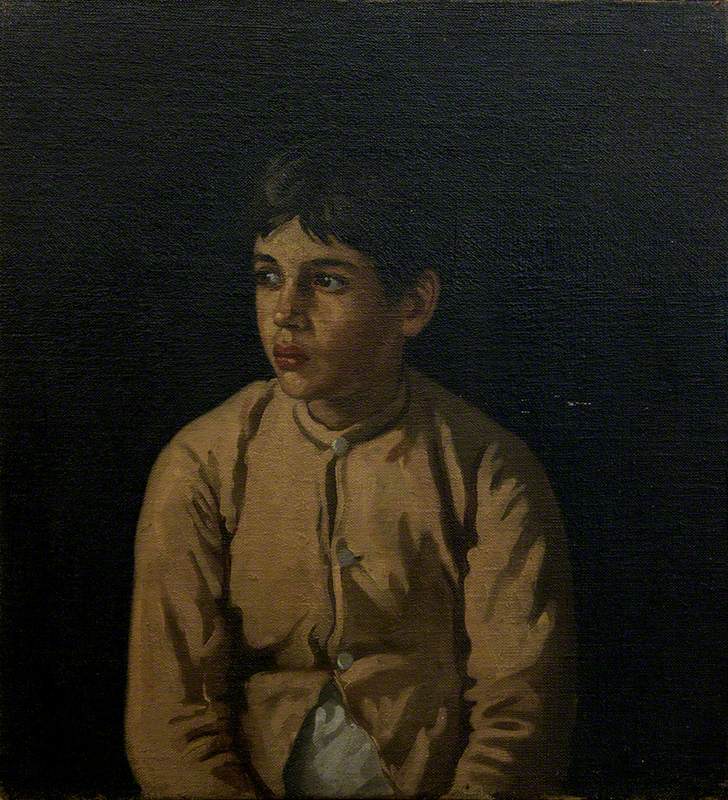


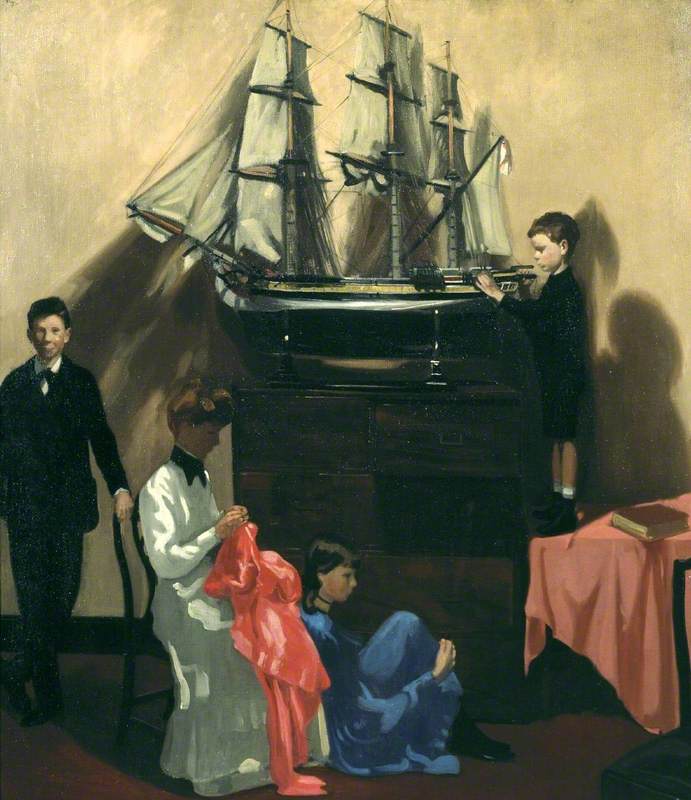
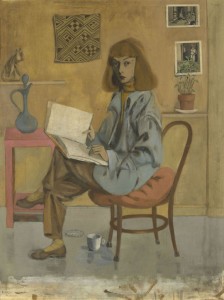
.jpg)
